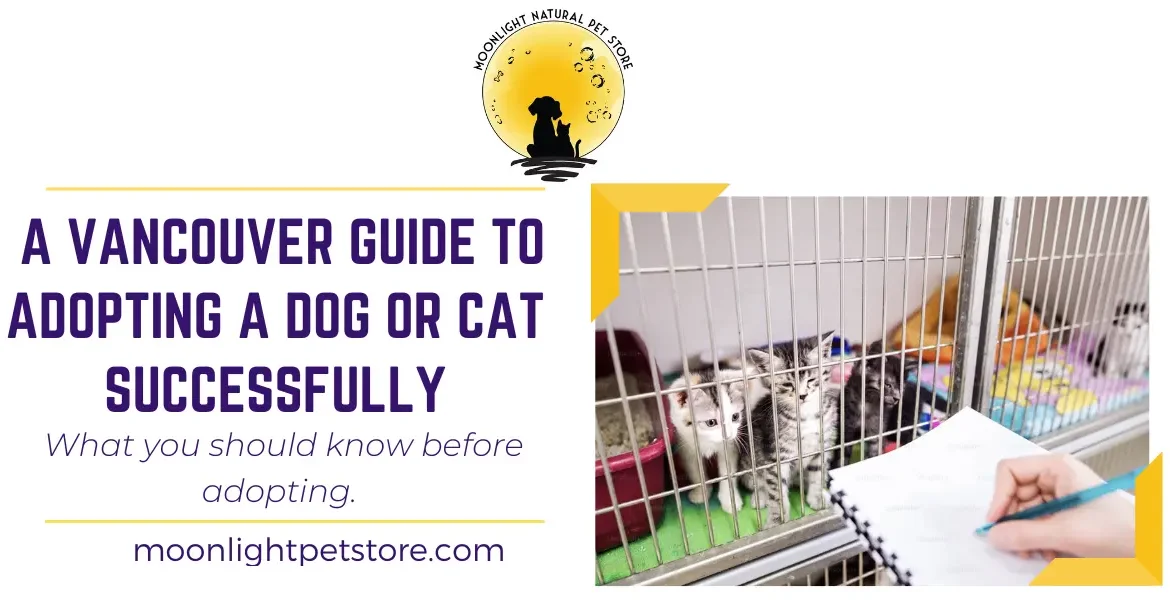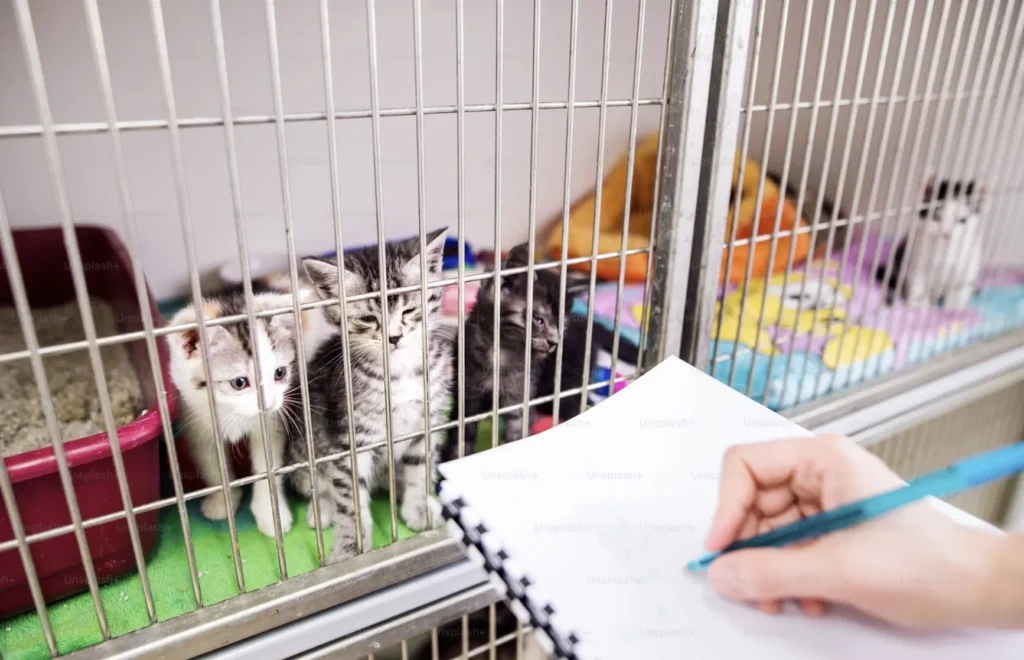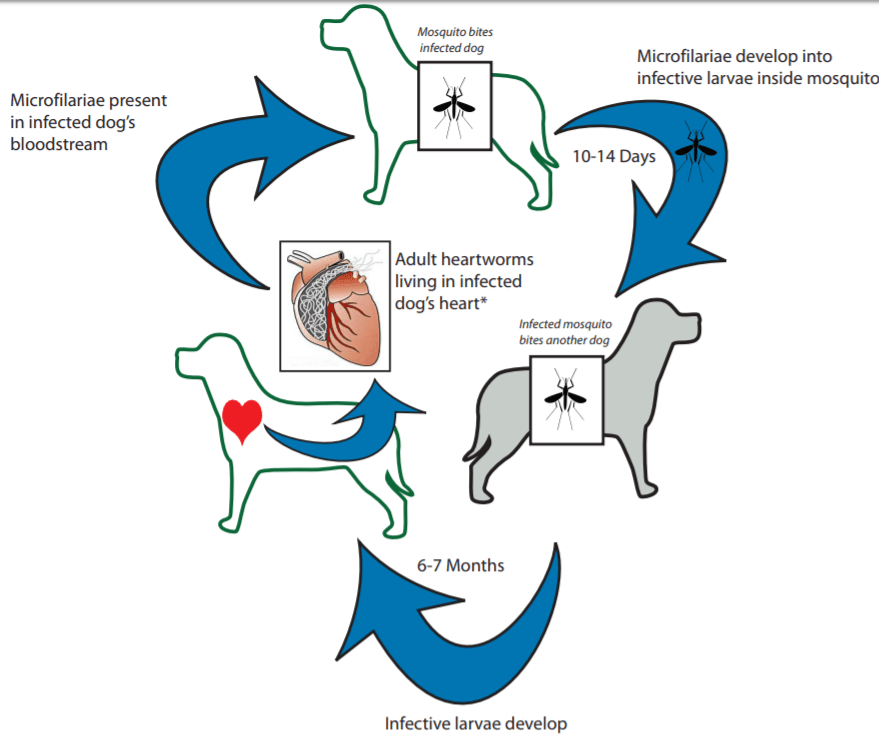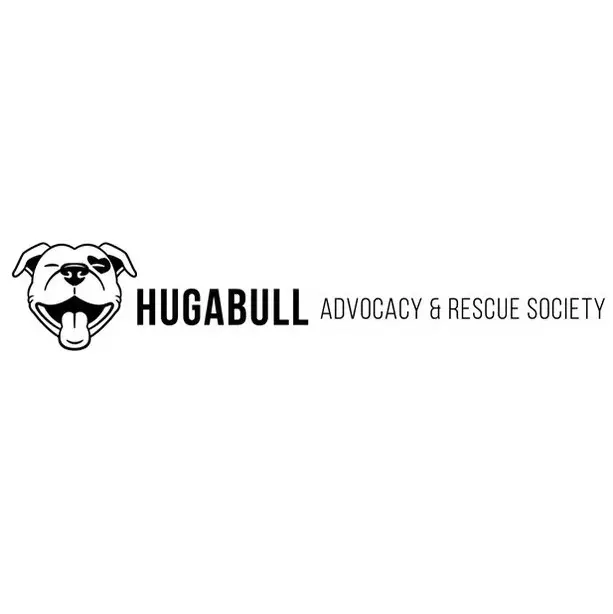
A Vancouver Guide to Adopting A Dog or Cat Successfully
Adopting A Dog or Cat – Expectations versus Reality
Adopting a dog or cat is a life-changing decision. You are committing to a new family member, a furry companion who will rely on you for love, care, and safety. While adoption is often portrayed as a heartwarming journey, it can sometimes turn disappointing, especially when expectations don’t align with reality. At Moonlight Natural Pet Store, we’ve heard numerous stories from customers who faced challenges post-adoption, ranging from undisclosed behavioural issues to unexpected health complications.
For example, a recent customer adopted a dog through a rescue that imports animals from overseas. Prior to adoption, the rescue sent heartwarming videos of a sweet, calm dog. However, upon arrival, the dog exhibited severe aggression, growling and biting without warning. As a first-time pet owner, the adopter was overwhelmed and disheartened. This story isn’t unique. We’ve heard accounts of dogs described online as “perfect family pets” who turned out to be aggressive, destructive, or not housebroken. This may not be the fault of the pets, but it leaves in its wake problems.
When there’s a vast divergence between expectations and reality, adopters can be left emotionally and financially scarred. Returned adoptions, though emotionally taxing, are not uncommon. While some argue that “saving a life” outweighs these challenges, first-time pet owners, especially those with financial constraints, deserve a more transparent and supportive adoption process.
The Shelter Statistics: Why Adoption Still Matters
According to the American Society for the Prevention of Cruelty to Animals (ASPCA), around 5.8 million companion animals entered shelters in 2024, with about 607,000 being euthanized. This represents about 10% of the animals. A few years ago, when we checked the amount of euthanasia stood around 20%.
“Although animals enter shelters for a variety of reasons, most dogs and cats entering shelters come in as strays (60% in 2024), followed by surrendered pets (29% in 2024) whose owners can no longer care for them due to unforeseen barriers.” (ASPCA) These stats underscore the pressing need for adoptions

The stats in Canada based on the Humane Society are from 2014 and not as comprehensive.
However, adopting a pet should be a responsible and informed decision, not just an emotional reaction. Adopting locally allows for better evaluation of an animal’s temperament, reduces transportation stress on the animal, and supports community rescues.
Adoption Red Flags for First-Time Pet Owners
- Ethical rescues operate on donations, not profit. Be wary if the agency lacks transparency about fees and expenses.
- Most rescues have outlays for spay and neutering fees
- Health-related surgeries or medications for pets in their care
- Immunization fees and proper records.
- Non-Local Adoptions Without Proper Assessment: Adopting a pet that hasn’t been fostered locally or assessed in person can lead to unexpected behavioural or health issues.
- Behavioural dog problems can include biting, growling, indoor peeing
- Behavioural cat problems can include peeing in the wrong spots (if not health related) or fighting with other pets at home
- Overly Perfect Online Bios: No pet is flawless. Bios that omit any challenges or quirks are red flags. This was the case in a recent Civil Tribunal Suit against Black Dog Rescue Society.
- Lack of Support Post-Adoption: Reputable rescues provide guidance and support even after adoption, especially for pets with medical or behavioural needs.
These fees rarely cover the full cost of care provided by the rescue, so donations and fundraising remain essential.
Meet the Vancouver Adoption/ Rescue Experts
Natasha Pupulin
Alberta Animal Rescue Crew Society
Cassie Preston
Program Manager-Paws for Hope
Kim Federico
Foster & Family Placement-Hugabull
Responses from Vancouver Foster-Based Hugabull
We sent one of the Vancouver rescue/ foster associations a Q&A so that potential adopters can understand what running these organizations feel like and why they charge adoption fees.
- Q: Where do you get your dogs from typically?
We get most of our dogs from local shelters/animal control. Less often but occasionally we will take dogs in from other rescues. We also take in owner surrendered dogs on a case by case basis depending on our capacity.
- Q: How many fosters on average do you have per month?
We have anywhere from 20-40 dogs in care at any given time which includes dogs who are in foster to adopt. Aside from puppies or bonded pairs who can be fostered together, most families foster one dog at a time. That means 20-40 fosters!
- Q: If you were to explain to customers how you are funded so that you can raise funds, what would you say? Let’s do it on a unit basis so that people can understand.
- Getting a dog and paying for all vet bills, microchipping etc costs = A spay/neuter procedure costs $400-$600, microchip is $30-$50, vaccines cost (puppies – $350-$500), adults ($200-$300) if they haven’t been vaccinated before. You then have to factor in many miscellaneous costs such as dewormer, the vet office consultation/exam fees + follow up visit fees, ear cleanings, nail trims, cones, medication etc we usually easily spend an additional $200-$500/dog.
- We also often take in “special” dogs who require extra care. That could mean allergy dogs who require expensive allergy meds each month, anxious dogs who require anti-anxiety meds each month, elderly or ill dogs who require x-rays, ultrasounds, dentals and other specialty procedures, dogs needing TPLO surgeries etc. These cases can run us an additional $1000-$5000+ per dog. These numbers also depend on where the dogs come from – most shelters will have vaccinated, chipped and sometimes spayed/neutered but it always depends on a number of factors.
- Adoption fee = Our adoption fee is $600 for adult dogs, $700 for puppies, and $350 for seniors aged 9+.
- Q: Therefore, Rescue Costs- Adoption Fees = what Hugabull loses/ makes?
It is so hard to do this math but it is rare for our dogs adoption fees to cover their costs of care.
- Q: Do you pay for other costs? Are the other costs your constant shortfall?
When you consider that a bag of good quality dog food for large breed dogs can run $100-$150/bad which is approx 1 month, add in training treats at $15/bag, enrichment tools such as kongs, slow feeders, food puzzles etc you are adding likely another $200+ per month
- Q: How much fundraising per month is required to keep you going?
The amount really fluctuates depending on how many dogs we have and what their health status is. At one point we were spending easily $10-$15k per month between all the dogs in our program. We work hard to do constant fundraiser, but we also really rely on our Hero Club donors (these are donors that set up a monthly auto donation via Canada Helps).
- Q: Do you still provide trainer assessments?
We now do our own assessments.
- Q: In terms of advocacy, is there any particular information you want to share?
We promote responsible ownership, we set our adopters up with trainers when they need them, and we adopt out dogs that are good representations of the breed.
- We offer free monthly training classes with a certified trainer through our Canines in the Community program.
- We also offer a collar exchange program where we will provide dog owners with a free Freedom Harness if they give up their shock, prong or choke collar.
- We also do what we can to help with the general dog overpopulation program and offer heavily subsidized spay and neuter procedures through our Reach program (mainly to Indigenous, un-housed or low-income people).
Why Adopt Pets Locally?
Aside from the red flags we’ve noted above, here are some other reasons to adopt locally:
Disease Prevalence & Importation Risks
Many infectious diseases have a strong geographic component: their spread depends on climate, disease vector availability (ticks, mosquitoes, sandflies, etc.), environmental persistence, and population immunity.

Some illnesses common in parts of the U.S. are rare or non-endemic in Canada but transporting dogs across borders (or long domestic distances) can introduce pathogens into native populations. For example:
- Heartworm: While Canada is considered a low-prevalence country for heartworm, some regions (southern Ontario, Quebec, Manitoba, parts of British Columbia) do have endemic transmission. The U.S., particularly in the southeastern states, has much higher prevalence. Dogs moved from those high-risk U.S. states would be then transmitting these diseases.
- Tick-borne diseases: Some tick species (and the diseases they carry) are more common or have higher incidence in the U.S., especially in regions with long tick seasons. While Canada has Lyme disease, anaplasmosis, and some other tick-borne agents, there are tick species (and thus disease risk) in the U.S. that are rare or only just emerging in Canada. Moving dogs from endemic areas increases risk of introducing new ticks or pathogen strains.
- Canine Brucellosis (Brucella spp.): This is an example of a disease which is less common in Canada but can be imported. It is contagious and zoonotic (i.e. can affect humans), so importation without adequate testing poses risk. Most rescues or people who bring dogs from common areas like the southern USA, Mexico and South Korea may not know or even have the funds to assess these risks before importation.
- Leishmaniasis: Not endemic in Canada. The vector/ parasite (sandflies) is found in areas in Central and South America. These can be brought into the country by asymptomatic dogs, and it tends to be zoonotic.
| Disease / Pathogen | U.S. Prevalence | Canadian Prevalence | Risk When Transporting Dogs |
| Heartworm | High prevalence in southeastern & midwestern U.S. ([AHS 2022 survey]) | Low prevalence; localized in southern ON, QC, MB, NB, BC | Dogs from high-prevalence states can introduce heartworm into low-prevalence Canadian areas. Mosquitoes can then spread infection locally. |
| Ehrlichiosis (Ehrlichia canis) | Endemic in many U.S. regions, especially south & southwest | In Canada the brown dog tick is found nationwide, but the disease is not considered endemic yet. Cases are rising due expanding tick ranges. | Infected dogs may bring pathogen into Canada; if competent ticks are present, local spread could occur. |
| Anaplasmosis | Widespread in U.S., especially upper Midwest & Northeast | Present in Canada but at lower incidence; risk areas mainly southern ON, QC, MB. | Imported dogs can spread new pathogen strains; ticks expanding northwards increase risk of establishment. |
| Canine Brucellosis (Brucella canis) | Sporadic but documented outbreaks in U.S. breeding facilities | Rare in Canada. Canine brucellosis in a Saskatchewan kennel found 2 cases from imported dogs. | Serious zoonotic risk: imported breeding dogs without testing. |
| Leishmaniasis | Present in some U.S. states with sandfly populations (e.g., Texas, Oklahoma) | Not endemic in Canada; only imported cases | Imported infected dogs can harbor the parasite for life. Transmission risk low unless vectors expand northward. |
Even regionally in Canada, you may have some transmission.
Does Canada Test for these Pet Parasites/ Diseases?
Most folks would wonder surely Canada Food Inspection Agency through the Canada Border Services Agency will ensure dogs and cats are tested for these before they are imported.
However, the truth is they are not unless they are in livestock i.e. animals bred for food consumption.
If you go through the Automated Import Reference System (AIRS) Home for importing a dog for adoption/fostering, you’d find that rabies is the only disease that is required to be tested.
Below is an example for a dog being brought in from Mexico.

The instructions tend to be similar to what you would get for southern US states. Currently, importation from South Korea is blocked.
Thus, keeping dogs in their geographic region, or thoroughly screening, quarantining, vaccinating, and using preventative medicine (for parasites, heartworm, ticks, etc.) when they move, helps reduce the risk to both the transported animal and the local population.
Transport Trauma
Relocating a dog/cat over long distances can be a highly stressful event even when the dog/ cat is with their owner.
For adoptions, dogs are being put together with strangers for a journey. A research paper from Bergamasco et al., 2010, highlights “transportation as a critical event since it significantly increases the subject’s cortisol levels.”
If you factor that with a dog/ cat being placed in a new environment, it is likely to trigger conditions such as reactivity, separation anxiety, or generalized anxiety. Unlike humans, you cannot explain to the pet that this transition is in your best interest.
Supporting pets in their local regions may provide a smoother transition and reduce the risk of stress-related setbacks.
Carbon Footprint of Importing Dogs
Some Canadian rescues import dogs from high-kill shelters in the U.S. where euthanasia happens because of time and space limits. The motivation is easy to understand, but the environmental impact is significant. On average, those U.S. shelters are 18–19 hours by road from Vancouver — or if from South Korea or Asia about a 20-hour flight. Most transports involve a mix of flights and long-haul drives, burning through thousands of litres of fossil fuel along the way.
Yet in northern B.C. communities such as Prince George, there is already a substantial need for rehoming unwanted and stray animals. That’s only about a 9-hour drive from Vancouver — far closer than bringing dogs from the U.S. border states. Supporting local rehoming efforts not only saves as many lives (and prevents future litters), but it also cuts down the environmental cost of transport.
And often, many adoptable dogs are available through neighbourhood shelters and rescue groups.
How and Where to Adopt a Dog or Cat in Vancouver?
Here is a list of rescues that we would recommend in Vancouver and Richmond. These are arranged from us having worked, adopted from them from most recent. For disclosure, we’ve not had much contact with Catfe and only browsed through Petfinder BC.
- Catoro Cafe https://catoropets.com/collections/apply-to-adopt
- VOKRA https://www.vokra.ca/adopt-a-cat
- Hugabull https://www.hugabull.com/adopt
- Richmond Animal Protection Society https://www.rapsbc.com/adopt/
- BC SPCA https://adopt.spca.bc.ca/
- Catfe https://www.catfe.ca/currentcats
- Petfinder BC Listings https://www.petfinder.com/search/dogs-for-adoption/ca/british-columbia/vancouver/
Adoption Costs for Dogs or Cats in Vancouver: What to Expect
Adoption fees vary by organization, but these fees typically cover essential services such as spaying/neutering, vaccinations, microchipping, and initial veterinary exams. For example:
- Catoro: Our adoption fee is $400 for one cat a and is inclusive of tax. https://catoropets.com/collections/apply-to-adopt
- VOKRA: Adoption fees range from $145 to $245 depending on the age of the cat. https://www.vokra.ca/adoption-fees
- Hugabull: Fees vary for bullies. $600 for adult dogs, $700 for puppies, and $350 for seniors aged 9+. https://www.hugabull.com/adopt
- BC SPCA: Fees vary by location but generally fall between $200 and $500. https://spca.bc.ca/faqs/what-adoption-fee-includes/
Adjusting Expectations when Adopting A Pet
It is important to adjust expectations when adopting so that you are not disappointed.
Here are a few key points to consider:
- Early Spaying/Neutering Concerns: We’ve heard from some clients of holistic vets about this as a concern. Yes, the AVMA also points to early sterilization leading to orthopedic, hormonal problems and potential diseases like cancer. Dr. Karen Becker and Dr. Peter Dobias highlight these concerns. However, adopters should note that most rescues have an early spay/neuter policy to control overpopulation within their limited budgets. Until there is enough space and funding, it may be difficult for rescues to delay spays and neuters.
- Limited Options for Purebreds or Puppies/Kittens: Adopters seeking young or specific breeds may face challenges, though organizations like VOKRA occasionally have purebred cats available.
Some rescued pets may come with scars—emotional, behavioural, or medical. However, with patience, training, and support, these animals can thrive. Not every adoption story is seamless, but informed decisions drastically reduce disappointment and returns.
Tips for a Successful Local Adoption of a Dog or Cat
- Calculate How Much You Can Afford: Most people read this as the adoption fee, but you must have two different budgets aside from acquisition cost of getting a dog or a cat.
- Monthly Budget: Food tends to be the most ongoing cost of owning a companion animal. Depending on the size of dog and food, for chicken kibble or chicken raw pet food for a 30 lb dog, estimate an average of $80 before sales tax for food and treats per month.
- Sick or Emergency Budget: For health issues, you can either choose to set money aside monthly or purchase pet insurance. An emergency vet visit could be anywhere from $1,200 to about $5,000 if anesthesia, overnight stay, drips or scans are required. We would always recommend pet insurance since the cost of tests and surgery are quite high. See our blog on whether you should bank cash or get pet insurance.
- Adopt Locally Whenever Possible: You can meet the pet, evaluate compatibility, and receive honest assessments.
- This also allows you to evaluate the pet against the Bios.
- Hire a Trainer During the Trial Period: Bringing a certified positive reinforcement trainer to assess the dog/cat can prevent mismatches. While a professional assessment can’t guarantee that a dog will be the perfect fit — behaviour can evolve or may not be fully visible during the evaluation — it provides an important baseline.
- It may also be a good idea to negotiate with the trainer that once the dog/cat is in your home, they should be able to provide ONE free consultation if any issues crop up.
- Ask About Foster Experience: Pets in foster homes often come with detailed behavioural insights. In foster-based/ on-site programs like Catfe, VOKRA, Hugabull, assessments are invaluable and greatly increase the chances of a safe and successful placement.
Pet Safe Keeping or Rehoming Pets: A Difficult Decision
Sometimes, circumstances require finding a new home for your pet. Reputable rescues can assist with this process. Ensure the new home is a good fit by conducting interviews and home visits.
However, if you are seeking a temporary home in Vancouver for your pet due to financial need, escaping domestic abuse or other reasons, we would highly recommend Paws for Hope Animal Foundation.
Paws for Hope Animal Foundation provides support to people so that their companion animals can remain in loving homes. They help reduce intakes into shelters or rescues. Whether it is addiction, mental health treatment, pet safe keeping (for families fleeing domestic abuse) or emergency boarding (for owners in medical distress etc.), their focus is to make sure “no pet is left behind.”
Although a lot of focus is put on the rescues and foundations, rehoming or strategies to work with surrenders are no less important.
They are not well known but here are some statistics from Paws for Hope you should consider if you want to prevent an animal from being surrendered to a rescue or local shelter in the first place.
- “Animal abuse is present in 89% of domestic violence cases. Many individuals will delay leaving an abuser for fear of their pet’s safety should they leave the pet behind, thus prolonging the abuse.
- In 2024-25, Paws for hope provided emergency funding/ veterinary care to 93 pet families.
- They had intake of 109 pets in the year.
- They had to turn away 627 families, this makes an average of about 52 people a month.
- In 2025-26, “What is notable is this year, we have already surpassed the total number of people we have turned away. From April 1 – today we have turned away 782 people and the last two months our average requests went from 80 people a month to 175 pet families.
How You Can Help Local Rescues
Supporting rescues isn’t limited to adoption. You can:
- Volunteer: Walk dogs, socialize cats, or help with admin work.
- Foster: Temporarily care for animals in need.
- Donate: Financial contributions or supplies.
- Adopt: If you’re ready, give a homeless pet a forever home.
Final Thoughts
Adopting a pet is a deeply rewarding experience when approached with careful research and realistic expectations. At Moonlight Natural Pet Store, we advocate for responsible, local adoptions where both pets and adopters are set up for success.
We do understand that people may travel and fall in love with a particular pet during their trip and want to bring them back. This blog is not aiming to dissuade you from your connection. It is meant for those who are in Canada and seeking to adopt while in Canada.
Let’s make adoption a journey of joy, not disappointment.
Special Thank You
Natasha Pupulin Spent the last 10 years working and volunteering in animal rescue, sheltering and spay neuter in Alberta & British Columbia. She was a volunteer with the Alberta Spay Neuter Task Force, providing low cost spay neuter programs to underserved First Nations communities. Also served as the first full time Behaviour Coordinator at Alberta Animal Rescue Crew Society and is a Team lead of the Behaviour Operations Team at Calgary Humane Society.
Paws For Hope Foundation – Cassie Preston
Hugabull – Kim Federico



